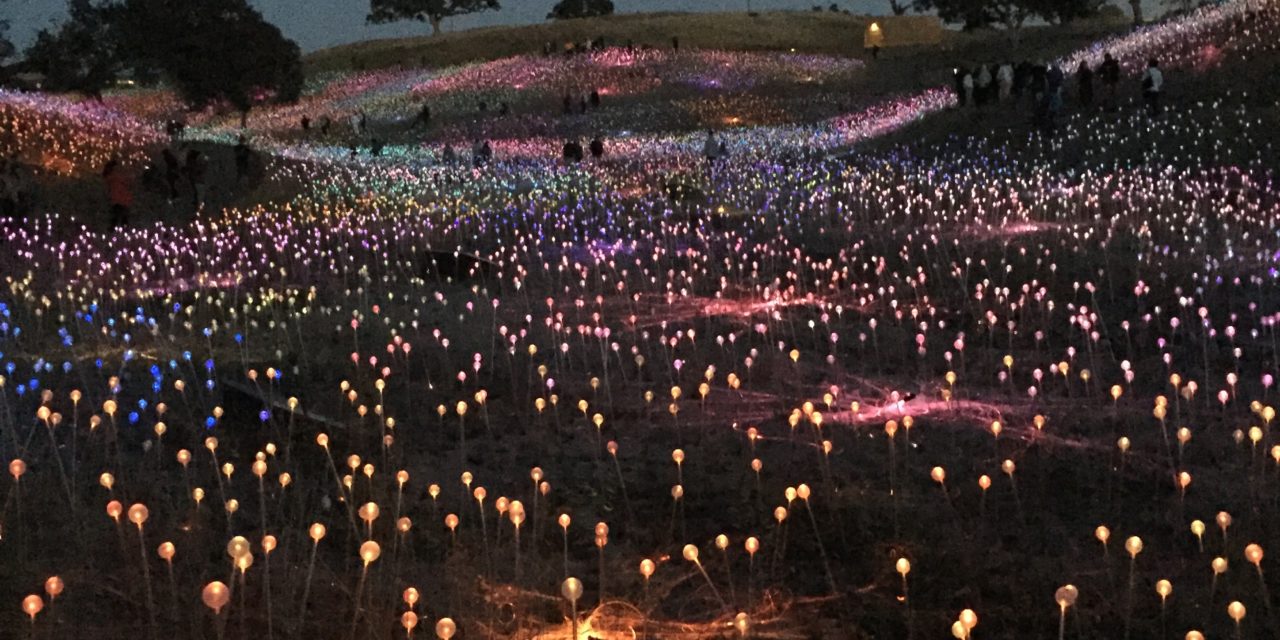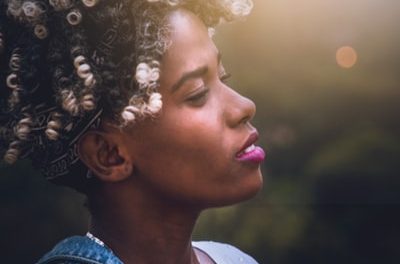If this is what death is like, I thought, then let it come. Or maybe I said it aloud to my daughter as we strolled acres of stemmed lights, the Sensorio installation outside Paso Robles. Dusk was ebbing, the faint globes gradually flared to meet our awe, the night hills awake in sea blues, teals, dawn pinks. Sixty-thousand spheres, lit by fiber optics, bloomed from the rolling fields, their solar exhalations as far as the eye could see. They nodded gently by day, like oats and wild carrot, to flower in full dark. We entered a magnificent garden, a galaxy of quiet, of sway and glassy color, like Dorothy’s lulling poppies before the green door of Oz. A place of reckoning, it seemed, a waystation between heaven and Earth. The closest I’ve gotten to a near-death experience is my stepmother’s story of her tonsillectomy gone wrong. She bled and bled and floated from her body, watching from above as the doctor and nurses worked madly. She could even name the objects on top of the cabinets in the room. I live in the foothills of the Great Smoky Mountains, but I had to travel to California to see so high and wide, to witness these orbs—waves bleeding color upon color almost as one, white being a spectrum of all wavelengths beyond our frail human sight. I died a little along the path of hill and valley that evening, and yet shaken as if from snow-covered sleep. My own tonsillectomy at six was merely a flash in time and the sore aftermath—held down for the ether mask, the smell of ammonia in my head for years. Here, only release, a dream of flying, an updraft under my chest, those around me not tourists oohing and ahhing, but ancestors soon to receive me: Effie and Alice Marie and Judith Ann, Chester and Phillip Lee. By day, we tie on our gowns and masks of white to blend in. In the fullness of dark that settles like voices we’ve nearly forgotten, we glow with the iridescence we’re meant to wear as we pass over and through the world’s lumen.
Visitation: Light






